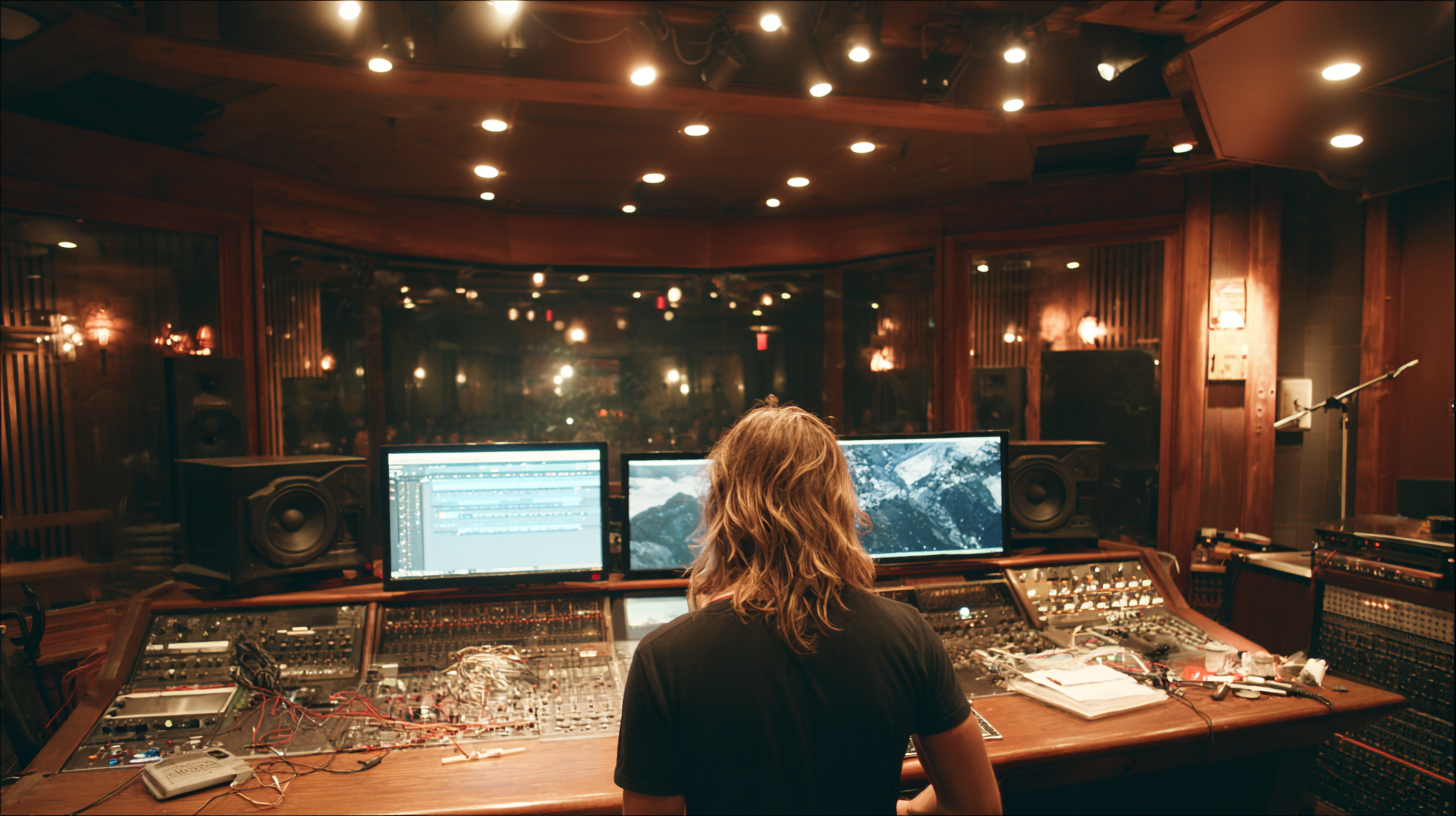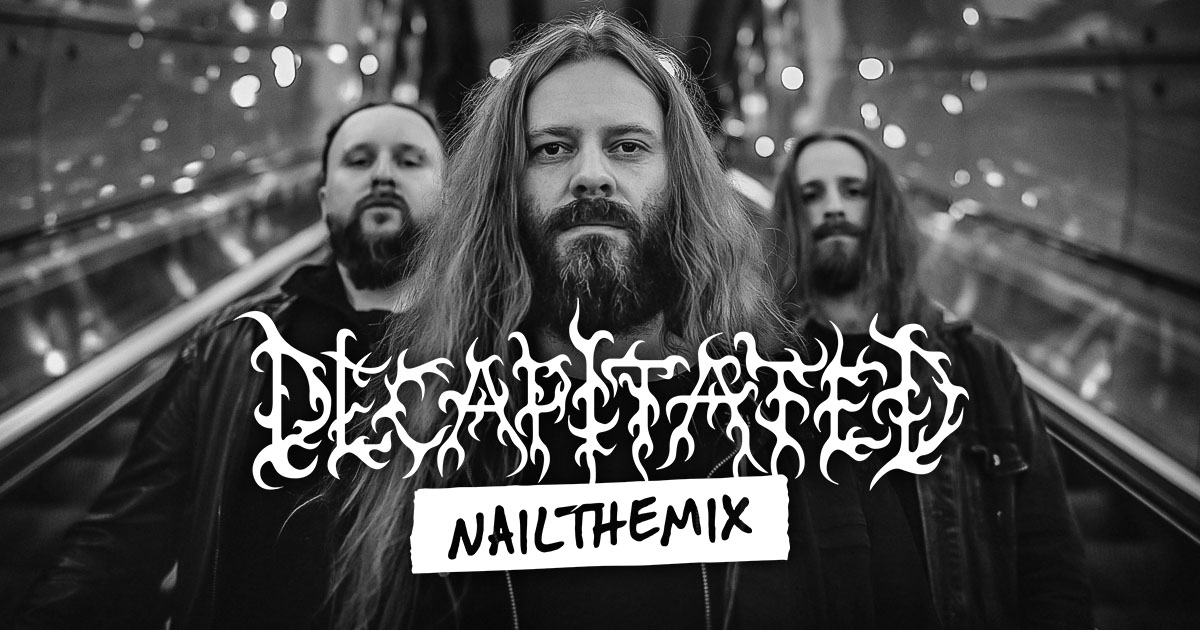
How to Use a Parametric Equalizer for a Brutal Metal Mix
Nail The Mix Staff
You already know what an EQ is. You’ve probably scooped the mids on a guitar track a thousand times. But when it comes to getting a pro-level, modern metal mix that’s both clean and devastatingly heavy, your basic three-band EQ just won't cut it. You need a surgical tool. You need a parametric equalizer.
A parametric EQ is your secret weapon for fixing problems and enhancing the good stuff with insane precision. It’s the difference between a muddy, fizzy demo and a tight, punchy mix that stands up to records from bands like Periphery or Gojira.
Let's dive into how you can use a parametric EQ to carve out a place for every instrument in your metal mix.
What Makes a Parametric EQ a Metal Mixing Weapon?
Unlike a simple graphic EQ where you can only boost or cut at fixed frequencies, a parametric EQ gives you total control over three key parameters for each band. This is why plugins like FabFilter Pro-Q 3, the stock Reaper ReaEQ, or Logic’s Channel EQ are staples in every metal mixer's toolkit.
Frequency: Pinpointing the Problem
This is the center of the frequency band you want to affect. In metal, you’re dealing with a ton of overlapping information—guitars, bass, kick, and snare all fighting for space in the low-mids. The ability to target exactly 400Hz instead of just a general "mid" knob is crucial.
Gain: The Boost or Cut
This is simple: how much you’re boosting or cutting the target frequency. But with a parametric EQ, this can be a huge 12dB boost to make a kick beater pop or a tiny, precise -1.5dB cut to gently tuck a guitar behind a vocal.
Q (Bandwidth): The Surgical Scalpel
This is the game-changer. The Q setting determines how wide or narrow the frequency band is. A low Q creates a broad, gentle curve for tonal shaping. A high Q creates a super-narrow, sharp notch. This is how you perform sonic surgery—like removing an annoying snare ring at 852Hz without gutting the rest of the snare's body.
Parametric EQ on Metal Guitars: Beyond the Mid-Scoop
Everyone knows the classic metal "V" shape. But a great guitar tone is carved, not just scooped. A parametric EQ gives you the precision to do it right. This is one of the foundational EQ strategies for mixing modern metal that separates the pros from the amateurs.
Taming High-End Fizz
High-gain amps, especially with boost pedals like a Tube Screamer, can generate a nasty, static-like "fizz" in the high frequencies. It’s that sound that makes guitars feel cheap and grating.
How to fix it:
Grab a parametric EQ and use a band with a very high Q (a narrow notch). Sweep it around in the 5kHz to 12kHz range. You’ll hear a specific harsh frequency jump out. When you find it, pull the gain down by 3-6dB. You can repeat this a few times to kill multiple fizzy spots. The result is a heavy tone that’s aggressive but smooth, not painful.
Scooping the "Honk" and "Mud"
Guitars, especially when quad-tracked, can build up a ton of energy in the low-mids, often described as "boxy" or "honky." This clashes directly with the snare body and bass guitar.
How to fix it:
- The Boxy Zone: Use a medium-Q band and sweep around 300Hz-500Hz. You'll find a frequency that makes the guitar sound like it’s coming out of a cardboard box. A 2-4dB cut here can instantly clean things up.
- The Mud Zone: The area around 200-250Hz can get muddy fast. A gentle, wide-Q cut here can add clarity without making the guitars sound thin.
Making Guitars and Bass Play Nice
One of the biggest struggles in a metal mix is getting the bass to cut through without turning the guitars into a thin mess.
How to fix it:
Decide where each instrument will live. Let’s say you want the bass to own the 100Hz region. On your guitars, use a high-pass filter to cut everything below 80-100Hz. Then, use a parametric band to make a small, surgical cut on the guitars right where the fundamental frequency of the bass sits. This creates a pocket for the bass to punch through.
Surgical Strikes on Your Drum Mix
A parametric EQ is non-negotiable for modern metal drums. You need to shape every single hit to cut through a wall of guitars.
Shaping the Kick Drum
A metal kick needs both low-end weight ("thump") and high-end attack ("click").
- Thump: Use a wide-Q boost somewhere between 60-80Hz to add power.
- Click: Find the beater's attack, usually between 2-5kHz. Use a medium-Q boost here to help it cut through.
- Boxiness Removal: Just like guitars, kicks can have a boxy sound. Sweep a narrow-Q band between 300-600Hz and notch out the ugliest frequency.
Fixing a Ringy Snare
That annoying weeeeeee sound after a snare hit? A parametric EQ can kill it.
How to fix it:
Create a band with a very high Q and a massive boost (+18dB). Sweep it slowly across the frequency spectrum until the annoying ring jumps out at you loud and clear. Once you’ve found it, flip that massive boost to a deep cut. The ring is gone, but the snare's tone is intact.
Cleaning Up Cymbals
Cymbals can easily sound harsh or build up a "gong" like resonance.
- High-Pass Filter: First thing, use a high-pass filter to cut out low-end rumble and kick/snare bleed, usually up to 200-400Hz.
- Harshness Removal: Use the same "search and destroy" technique from the snare to find piercing frequencies in the cymbals (often 3-6kHz) and notch them out.
Next-Level Moves: Dynamic and Mid/Side EQ
Once you've mastered the basics, a parametric EQ with advanced features can take your mixes even further.
Dynamic EQ: Your Automated Assistant
A dynamic EQ is a parametric EQ where the gain change is triggered by the volume of the signal. Think of it as a frequency-specific compressor or expander. For example, you can set it to only cut the harshness in a cymbal when the drummer really smashes it, leaving the tone untouched during quieter parts. It’s an incredibly powerful tool for controlling elements that are inconsistent.

100+ Insanely Detailed Mixing Tutorials
We leave absolutely nothing out, showing you every single step
Mid/Side EQ: Control Your Stereo Image
Some parametric EQs, like Pro-Q 3, can operate in Mid/Side mode. This lets you EQ the center (Mid) of your mix differently from the sides (Side).
A classic metal trick: On your main guitar bus, switch your EQ to M/S mode. On the "Side" channel, use a high-pass filter to cut the lows below 150Hz. This removes muddy low-end from your panned guitars, tightening up the center of your mix for the kick and bass. It’s a subtle move that adds a ton of clarity.
Putting It All Together
Mastering a parametric equalizer is less about knowing rules and more about training your ears to identify problem frequencies. Every technique we've covered—from surgical cuts on guitars to M/S processing on a bus—is about making intentional, precise decisions. It’s a skill that requires practice, but it's fundamental to a professional sound.
Watching a producer dial this stuff in, in real-time, on a real session, is one of the fastest ways to level up your skills. Imagine seeing the exact EQ curve used to make a Meshuggah guitar sit perfectly against the kick, explained by the producer who actually mixed it.
At Nail The Mix, we give you that "fly on the wall" experience. Every month, you get the raw multitracks from a massive rock or metal song and watch the original producer mix it from scratch, explaining every plugin, every setting, and every decision they make.
If you’re ready to go beyond presets and truly unlock your sound by mixing modern metal, come see how the pros do it.
Get a new set of multi-tracks every month from a world-class artist, a livestream with the producer who mixed it, 100+ tutorials, our exclusive plugins and more
Get Started for $1





